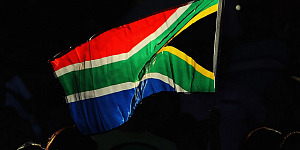South Africa's central bank left its benchmark repurchase rate steady at 7.0 percent, as expected, and while it re-iterated that it still believes that it is near the end of cycle of raising rates, it cautioned that a deteriorating outlook for inflation in the short term "requires increased vigilance" and it could reassess its outlook for rates if upside risks to inflation take hold.
The South African Reserve Bank (SARB) has maintained its rate following a 25-basis-point hike in Mach last year, bringing total rate increases to 200 basis points since January 2014. Since September last year the central bank has said it is near the end of its tightening cycle.
While the central bank kept its 2018 inflation forecast at 5.5 percent, it pushed back its forecast for inflation to reach its target range until the fourth quarter of 2017 from the second quarter and raised its forecast for inflation to average 6.2 percent this year from November's forecast of 5.8 percent.
"This deterioration is mainly due to changed assumptions regarding international oil prices, the domestic fuel prices and the outlook for food prices, which more than offset the more favorable exchange rate assumption," SARB Governor Lesetja Kganyago said.
South Africa's headline inflation rate rose for the fourth consecutive month in December to 6.8 percent from 6.6 percent in November - above SARB's target range of 3.0 to 6.0 percent - despite improved rain in rough-stricken areas and a resilient rand.
"While some of the key risks to the rand appear to have subsided for now, they could re-emerge at any stage," Kganyago said.
Despite December's rate hike by the U.S. Federal Reserve, the rand has appreciated since early 2016 and was trading at 13.32 to the U.S. dollar today, up 3.2 percent this year.
But the outlook for South Africa's economy remains weak, revising down its forecast for 2017 growth to 1.1 percent from a previous 1.2 percent. The forecast for 2018 was steady at 1.6 percent.
"The recent monthly data paint a bleak picture for the fourth quarter of 2016," Kganyago said, adding he expects growth in 2016 to have averaged 0.4 percent and there may even be a downside risk to this forecast as mining production contracted in October and November.
South Africa's Gross Domestic Product grew by an annual 0.7 percent in both the third and second quarters of last year following contraction of 0.1 percent in the first quarter.






































